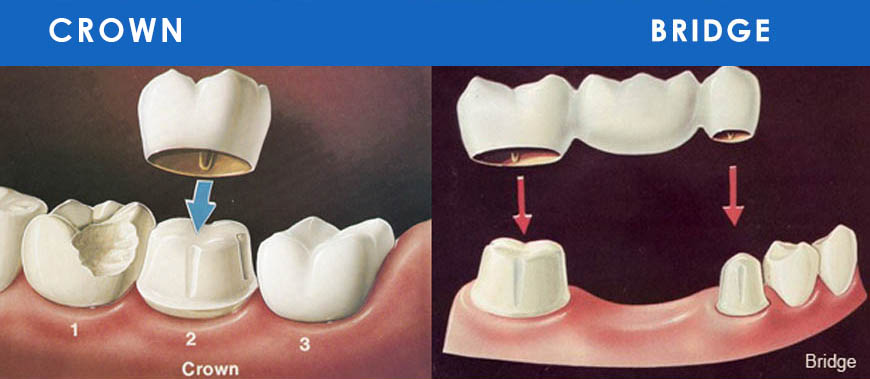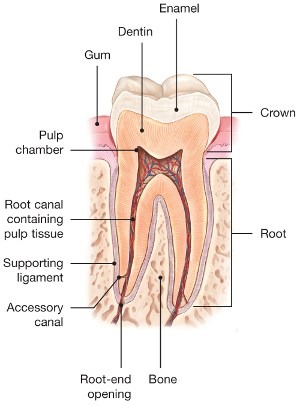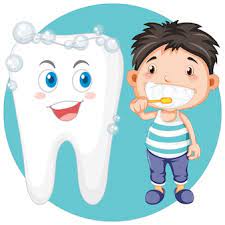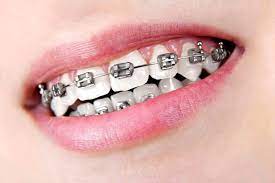Crown and Bridges Treatment in Vizag | Dental Crown Care in Visakhapatnam
A dental crown may restore and protect one of your most attractive features: your smile. Dental crowns are artificial caps cemented over decaying or broken teeth to restore their natural appearance, shape, and chewing and biting abilities. They can help fix flaws like gaps between teeth or discolouration, making you feel better about yourself. But, receiving a dental crown is only the first step; to ensure it lasts for years, you must also take proper care of it.
Proper maintenance of a dental crown is essential to extending its life and maintaining good oral hygiene. Regular upkeep can save you time, money, and discomfort by avoiding future damage, decay, and infection. In this piece, we'll go over several strategies for maintaining the beauty and function of your dental crown. If you want Crowns and Bridges treatment in Vizag, then The Dental Studio Vizag is the best. Our expert doctors can help you with the best dental crowns and bridge treatment.
Best Dental Clinic in Vizag
Types Of Crowns:
Different kinds of dental crowns have different benefits and drawbacks. Some of the most frequent are as follows:
Porcelain-fused-to-metal (PFM) crowns:
Crowns made of porcelain fused to a metal framework are known as porcelain-fused-to-metal (PFM) crowns. They are both sturdy and pleasing. The metal framework ensures longevity, while the porcelain crown mimics the look of real teeth. Yet, in rare situations, a black line at the gum line may state the metal beneath the crown.
All-ceramic or all-porcelain crowns:
Crowns constructed completely of ceramic or porcelain are popular. It is due to their natural appearance and durability. Front teeth and other noticeable mouth regions often choose for them. All-ceramic crowns have the advantage of being biocompatible and translucent, making them seem much like real teeth. They may not be as strong as PFM crowns and could chip or break.
Metal crowns:
Gold, platinum, other precious metals, or base metal alloys (nickel or chromium) are used to create metal crowns. They are well-respected for their sturdiness and resilience. Metal crowns are used on less visible rear teeth. It is because they need little tooth preparation, but their metallic colour makes them less acceptable.
Zirconia crowns:
Crowns are made of zirconia, a robust, tooth-coloured material with excellent fracture resistance. Crowns made from zirconia are long-lasting and pleasing since they mimic real teeth. Both the front and back teeth can enjoy their use.
Composite resin crowns:
Crowns are composed of composite resin, miming teeth' natural colour. Although they cost less than other crown options, they may not last as long. Crowns made of composite resin are often employed as a stopgap measure or when aesthetics aren't paramount.
Temporary crowns:
Crowns only meant to be worn are usually composed of acrylic or stainless steel. They serve as a stopgap while the permanent crown is being made. Temporary crowns aren't as strong or lasting as permanent ones, but they cover up damage until the permanent restoration can be placed.
The tooth's location, the severity of decay or damage, the patient's preference for aesthetics, and so on all play a role in determining the crown material. Your dentist will examine your mouth and tell you which crown material is best for you. Many of us have dental issues, and dental crown treatment is something that most people are getting done.
Best Dental Services in Visakhapatnam
Dental Crown Maintenance:
Taking good care of your dental crown is crucial if you want it to last as long as possible and continue doing its job. How to maintain your dental crown is outlined below. Once you get your dental crown inserted, the next big thing is its maintenance. So, dental crown maintenance plays a vital role in dental treatment.
- To prevent cavities and crown damage, it's important to maintain good oral hygiene by brushing your teeth at least twice daily and flossing once a day.
- Don't consume anything too tough or sticky; doing so can damage your crown or cause it to fall out. This category falls under hard candies, nuts, ice, and chewing gum.
- You should use a mouthguard to avoid damage to your crown if you engage in contact sports or engage in nighttime teeth grinding.
- Your dentist can check for damage symptoms or wear on your crown during routine exams, which can help keep your teeth and gums healthy.
- Don't use your teeth to bite or chew on something too firm, such as a pen cap or pencil rubber. Your crown may be harmed if you do this.
- Brush your teeth twice daily, floss daily, and use an antimicrobial mouthwash once daily to maintain good oral health
- Contact your dentist ASAP if you're experiencing any pain or discomfort surrounding your crown or see any chips or cracks.
Types of Dental Bridges:
Dentists may use a dental bridge to replace a missing tooth or teeth. Pontics are replacement teeth supported by dental crowns cemented onto the teeth on each side of the gap. Dental bridges come in various materials and designs to meet the demands of each patient. Some typical examples are as follows:
Traditional dental bridges:
The most typical bridges are the traditional dental bridges. It involves dental crowns bonded to the teeth on either side of the gap to support one or more artificial teeth. The artificial teeth are anchored to the crowns, which act as abutments. Porcelain fused with metal or ceramic is used to create conventional bridges.
Cantilever bridges:
A cantilever bridge is the best option when only one tooth is present on either side of the gap. One side of the pontic is supported by a dental crown bonded to the tooth next to it. This bridge design stresses the anchoring tooth more than conventional bridges. As a result, it might not be the best option in every circumstance.
Resin-bonded bridges:
Maryland bridges feature a pontic supported by a metal or porcelain superstructure. These bridges are cemented to the chewing surfaces of the teeth on each side of the gap with resin, eliminating the need for dental crowns. Since only a small amount of enamel from the neighbouring teeth needs to be removed. Maryland bridges are a less intrusive option than regular bridges. Yet, they are usually only used to replace the front teeth, and they may not be as strong or long-lasting as other options.
Implant-supported bridges:
An alternative to conventional bridges for replacing lost teeth is implant-supported bridges. Dental implants are titanium posts implanted into the jaw to act as replacement tooth roots. When the artificial teeth are secured to the implants, they provide a firm foundation. Implant-supported bridges are surgically placed and need much bone support to provide the stability, function, and aesthetics that patients desire.
There are many considerations when deciding on a dental bridge. Such as the number and position of missing teeth, the health of the adjacent teeth, the patient's budget, and their personal aesthetic preferences. Your dentist will examine your mouth and decide which bridge will work best for you.
Dental Bridge Maintenance:
If you want your dental bridge to last and keep your teeth healthy, you must take good care of it. Once you insert your dental bridge, you must maintain it. So, dental bridge maintenance is important in dental treatment. Care for dental bridges by following these guidelines:
Practice good oral hygiene:
Keep up with your usual brushing and flossing routine, as you would with your natural teeth. Brush your teeth and bridge twice daily with a soft, bristled toothbrush and fluoride toothpaste. The area where the bridge joins the gums is especially susceptible to plaque and food buildup and must be cleaned. Additionally, floss every day, cleaning beneath the bridge and between the artificial teeth and neighbouring teeth with normal floss or a floss threader.
Use specialized oral hygiene tools:
To clean the area around the bridge, it is recommended to use interdental brushes or water flossers. Using one of these instruments, you can clean the space between your politics and teeth.
Be mindful of your eating habits:
Even though dental bridges are tough as nails, you must watch what you eat to ensure the bridge lasts as long as possible. Biting or chewing on ice, pencils, or fingernails can cause damage to the bridge or even cause it to come loose. You should also limit your intake of sticky or chewy foods, as these can dislodge or get lodged under the bridge.
Attend regular dental checkups:
The health of your dental bridge can only be monitored through routine dental exams. Your dentist will verify the fit of the bridge and look for cavities or gum disease in the teeth next to it. If you have built-up plaque or tartar that you cannot remove at home, they may also offer expert cleaning services.
Quit bad habits:
Habits like teeth grinding (bruxism) place extra stress on your dental bridge. It increases the likelihood of it breaking or becoming loose. Talk to your dentist about getting a nightguard or other preventative steps if you grind or clench your teeth.
Address concerns:
Quick action is necessary if you experience any problems with your dental bridge, such as a loose crown or discomfort. Taking care of issues as soon as they arise can assist in avoiding making them worse.
Remember that the health and effectiveness of your dental bridge depend on your diligence in caring for it. If you want your dental restoration to last as long as possible, it's important to keep up with your regular dental checkups as directed by your dentist.
Importance of Dental Crowns and Bridges:
Crowns and bridges for teeth are crucial to good dental hygiene. Some of the many reasons they are so important are as follows:
Restoring tooth function:
Dental crowns and bridges can replace lost or damaged teeth, restoring normal chewing and biting function. Crowns are caps cemented over damaged teeth to restore their shape, size, and strength, allowing the patient to eat again. Bridges, yet, replace lost teeth to restore the chewing, speaking, and biting functions.
Strengthening weakened teeth:
Teeth that have been compromised by factors such as decay, massive fillings, or root canal therapy enjoy the placement of crowns. Crowns protect teeth from extra damage by strengthening and stabilizing them after they have been broken or cracked.
Enhancing aesthetics:
Dental crowns and bridges improve the look of your smile because they are made to look like your own teeth in terms of shape, color, and size. Replacing missing or broken teeth can enhance a person's smile. This appearance change can improve one's sense of self.
Preventing tooth shifting:
Preventing adjacent teeth from slipping into the vacant space after tooth loss is essential for maintaining proper alignment and a healthy bite. Bridges are used to replace lost teeth, keeping the remaining teeth in place and avoiding the need for orthodontic work.
Maintaining healthy bone in the jaw:
Teeth loss can cause the jawbone to deteriorate. Dental bridges can aid in preserving jawbone structure by acting as artificial teeth and stimulating the jawbone underneath. This stimulation aids in preventing bone loss and keeping bone density at a healthy level.
Long-lasting and durable solution:
Dental crowns and bridges are a long-lasting and sturdy option, provided they are cared for and maintained. They're strong enough to endure biting and chewing, so they're a safe bet for restoring teeth' original functionality.
Flexible and customizable:
Crowns and bridges can be made to match the size, shape, and colour of your natural teeth. It creates a seamless and flawless smile. They come in various materials, from conventional porcelain fused to metal to pleasing all-ceramic choices.
Conclusion:
A dental crown or bridge may be recommended for your unique oral situation, but your dentist should determine this. To get your dental checkup, visit one of the best dental clinics in Visakhapatnam, The Dental Studio Vizag, near Siripuram. They are trained to diagnose any issues with your mouth and then suggest the best action to restore your oral health and smile.




